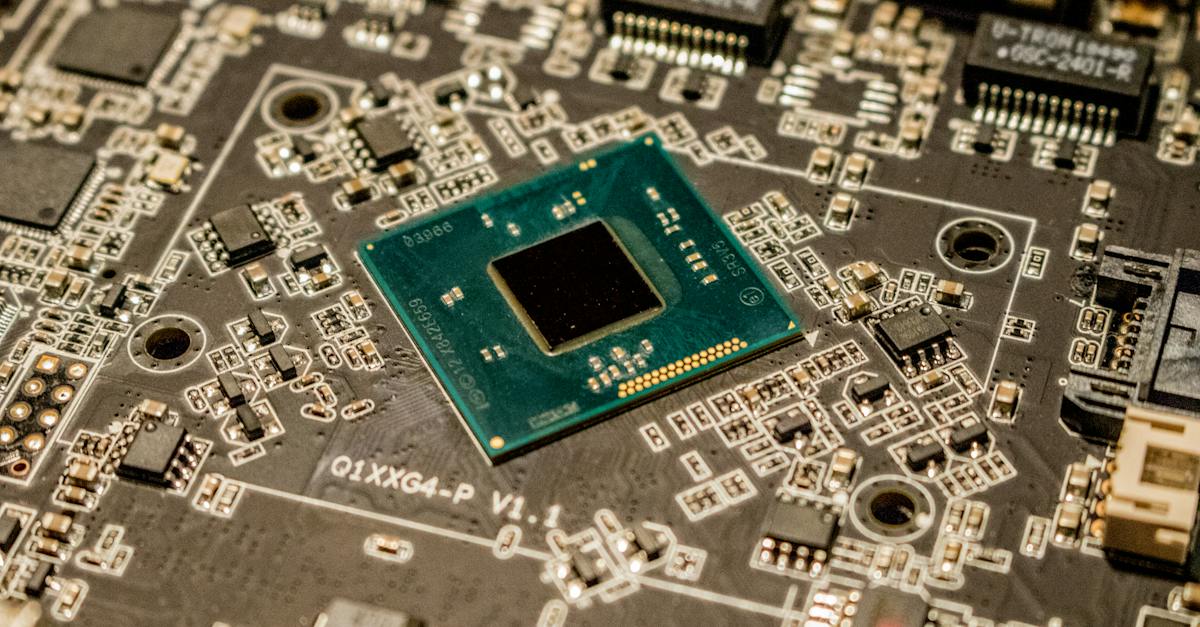Welcome to the world of quantum resistance measures in 2024. As technology continues to advance at an unprecedented pace, so too does the need for robust security measures. With the rise of quantum computing, traditional encryption methods are at risk of being compromised. In this article, we will explore the cutting-edge solutions that are being developed to protect our data and ensure its confidentiality in the quantum era.
Imagine a world where your sensitive information, from financial transactions to personal communications, is vulnerable to malicious attacks. This is the reality we face as quantum computing becomes more powerful. However, researchers and experts are not standing idly by. They are actively working on quantum-resistant measures to safeguard our data from the threats of tomorrow.
In the following paragraphs, we will delve into the exciting advancements in quantum-resistant cryptography, post-quantum algorithms, and quantum key distribution. Get ready to discover the innovative technologies that will shape the future of cybersecurity and protect our digital lives in the quantum age.
Quantum Resistance Measures in 2024
In the fast-paced world of technology, staying ahead of cyber threats is crucial to safeguarding sensitive information. As quantum computing continues to mature, the need for quantum resistance measures becomes increasingly urgent. Fortunately, ongoing research and development efforts are paving the way for innovative approaches to protect our data in the quantum era.
Advancements in Quantum-Resistant Cryptography
One of the key areas of focus in quantum-resistant measures is quantum-resistant cryptography. Traditional encryption methods, which rely on the difficulty of factoring large numbers, are at risk of being compromised by quantum computers capable of performing calculations exponentially faster than classical computers.
Quantum-resistant cryptography aims to develop cryptographic algorithms that can withstand attacks from quantum computers. These algorithms are designed to be resistant to the computing power of quantum machines, ensuring the security of our data even in the face of this exponentially enhanced processing power.
Post-Quantum Algorithms
Another promising area of research is the development of post-quantum algorithms. These algorithms are specifically designed to be resistant to attacks from both classical and quantum computers, making them a robust security measure for the future.
Post-quantum algorithms utilize mathematical concepts that are believed to be resistant to quantum attacks, such as lattice-based cryptography, code-based cryptography, and multivariate cryptography. By implementing these advanced algorithms, organizations can proactively protect their data from potential threats posed by quantum computing advancements.
Quantum Key Distribution (QKD)
In addition to quantum-resistant cryptography and post-quantum algorithms, another crucial technology in the realm of quantum resistance measures is quantum key distribution (QKD). QKD leverages the principles of quantum mechanics to securely distribute cryptographic keys between two parties. Unlike traditional key exchange methods, QKD provides unconditional security, as any attempt to intercept the quantum key would disrupt the transmission, alerting both parties to the potential breach.
The utilization of QKD ensures the integrity and confidentiality of data, as any unauthorized attempt to access the information would be detected. By incorporating QKD into their security infrastructure, organizations can establish a robust defense against future quantum threats.
The Need for Robust Security Measures
In today’s rapidly advancing technological landscape, the need for robust security measures has become increasingly crucial. As technology evolves, so do the methods employed by cybercriminals to breach security systems and gain unauthorized access to sensitive information. Traditional encryption methods that were once deemed secure are now facing unprecedented threats due to the rise of quantum computing.
Quantum computers have the potential to disrupt the foundations of modern cryptography by leveraging their immense computational power. They can decipher complex encryption algorithms that would take classical computers billions of years to crack. This poses a significant risk to our data and the integrity of digital communication.
To address this challenge, there is an urgent need to develop quantum-resistant measures that can withstand attacks from quantum computers. Quantum-resistant cryptography, post-quantum algorithms, and quantum key distribution are the innovative technologies at the forefront of this endeavor.
Quantum-resistant cryptography focuses on developing encryption algorithms that can resist attacks from quantum computers. These algorithms are designed to withstand the computing power of quantum computers and maintain the confidentiality and integrity of data. They offer enhanced protection against emerging threats, ensuring that our sensitive information remains secure.
Post-quantum algorithms are another essential component of robust security measures. These algorithms are designed to be resistant to attacks from both classical and quantum computers. By leveraging mathematical problems that are difficult to solve even for quantum computers, post-quantum algorithms provide a high level of security and protection.
Quantum key distribution (QKD) is a revolutionary technology that enables secure communication by leveraging the fundamental principles of quantum mechanics. QKD provides a secure method for exchanging cryptographic keys between parties, ensuring that the keys remain secret and cannot be intercepted or tampered with.
As we move closer to the quantum era, it is crucial to remain proactive in developing and implementing robust security measures. By investing in research and development efforts focused on quantum-resistant cryptography, post-quantum algorithms, and quantum key distribution, we can fortify our defenses against evolving cyber threats.
Together, these innovative technologies will shape the future of cybersecurity and protect our data in the quantum era. It is essential to stay ahead of the curve and continue to prioritize the development of quantum-resistant measures to safeguard the confidentiality, integrity, and availability of our sensitive information.
Risks of Traditional Encryption Methods
With the rapid advancements in technology, traditional encryption methods are becoming increasingly vulnerable to sophisticated attacks. While they have served us well in the past, these methods are ill-equipped to withstand the power of quantum computers. As we edge closer to the quantum era, it is crucial to understand the risks associated with relying solely on traditional encryption methods.
- Quantum Computing Threat: Traditional encryption methods, such as the widely-used RSA and ECC algorithms, rely on the difficulty of factoring large numbers or solving discrete logarithm problems. However, quantum computers have the potential to solve these problems exponentially faster than classical computers. This means that the encryption algorithms that have protected our data for years can be easily cracked by a sufficiently powerful quantum computer, rendering our sensitive information at risk.
- Data Interception: Traditional encryption methods can also be vulnerable to data interception attacks. Hackers can intercept encrypted messages and store them to be decrypted in the future once powerful quantum computers become available. This means that even encrypted communications and transactions that are considered secure today may be compromised in the future.
- Security Backdoors: In some cases, traditional encryption methods have been subject to security backdoors, intentional or unintentional weaknesses that can be exploited by hackers. These backdoors can compromise the confidentiality and integrity of encrypted data, leaving it susceptible to unauthorized access and manipulation.
- Long-term Security: It’s not just the immediate threats that we need to be concerned about. The security of encrypted data needs to be ensured for the long-term. Even if quantum computers are not yet powerful enough to break traditional encryption, it is crucial to start preparing for the inevitable.
To address these risks, it is imperative that we invest in the development and implementation of quantum-resistant encryption methods. Quantum-resistant cryptography, post-quantum algorithms, and quantum key distribution are key areas of research in this domain. By embracing these innovative technologies, we can strengthen the security of our data and protect it from the emerging threats in the quantum era.
Remember, staying proactive and keeping pace with advancements in encryption technology is essential to safeguarding our sensitive information in the face of evolving cyber threats.
Introduction to Quantum Computing
Quantum computing is a rapidly evolving field that harnesses the principles of quantum mechanics to solve complex computational problems. Unlike classical computers, which use bits to represent information as either 0 or 1, quantum computers use quantum bits, or qubits, which can represent information as both 0 and 1 simultaneously due to the phenomenon of superposition.
This ability to exist in multiple states simultaneously gives quantum computers immense computational power and the potential to solve problems that are currently intractable for classical computers. Quantum computers can perform parallel computations, which means they can process vast amounts of information simultaneously, offering exponential speed-ups in certain computational tasks.
However, along with the promise of quantum computing comes the threat of breaking traditional encryption methods. Quantum computers, with their unprecedented processing power, have the potential to easily crack current encryption algorithms that rely on the difficulty of factoring large numbers, such as RSA.
This vulnerability poses a significant risk to the security of sensitive data, including financial transactions, personal information, and government secrets. As we enter the quantum era, it’s crucial to develop and implement quantum-resistant encryption methods to protect our critical information from the threat of quantum attacks.
Research in post-quantum cryptography, also known as quantum-resistant cryptography, aims to develop encryption algorithms that are secure against attacks from both classical and quantum computers. These algorithms rely on mathematical problems that are believed to be resistant to quantum attacks, such as lattice-based cryptography, code-based cryptography, and multivariate cryptography.
In addition to post-quantum algorithms, another approach to quantum-resistant encryption is quantum key distribution (QKD). QKD utilizes the principles of quantum mechanics to securely distribute encryption keys. By leveraging the fundamental properties of qubits, QKD offers a provably secure method for establishing secure communication channels that are resistant to eavesdropping and man-in-the-middle attacks.
The advent of quantum computing introduces both opportunities and challenges for the field of encryption. While traditional encryption methods are at risk of being compromised by quantum attacks, ongoing research in post-quantum cryptography and quantum key distribution offers promising solutions for achieving quantum-resistant encryption. By staying proactive and investing in the development and implementation of quantum-resistant encryption methods, we can ensure the security of our sensitive information in the quantum era.
Cutting-edge Solutions for Data Protection
In order to ensure the security of your data in the face of the growing threat of quantum computing, it is crucial to explore cutting-edge solutions for data protection. Traditional encryption methods are at risk of being compromised, but there are innovative approaches that offer quantum resistance. These solutions are being developed to safeguard sensitive information and address the vulnerabilities of traditional encryption methods.
One of the key areas of research in this domain is post-quantum cryptography. Post-quantum cryptography focuses on developing encryption algorithms that can resist attacks from both classical computers and quantum computers. These algorithms are designed to withstand the computational power of quantum computers, providing a strong level of security. Researchers are actively exploring new techniques and algorithms to create post-quantum encryption methods that can effectively protect data against quantum attacks.
Another promising solution is quantum key distribution (QKD). QKD is a method that leverages the principles of quantum mechanics to securely exchange encryption keys. Unlike traditional methods that rely on mathematical complexity, QKD uses the laws of quantum physics to ensure the confidentiality of the keys. By detecting any attempts to intercept or tamper with the keys, QKD provides a level of security that is unmatched by classical encryption methods.
By incorporating post-quantum cryptography and quantum key distribution into your data protection strategies, you can stay ahead of the advancing threat landscape. These cutting-edge solutions offer resilience against quantum attacks and provide a more secure environment for your sensitive information. It’s important to stay informed about the latest developments in quantum-resistant encryption and explore ways to implement these solutions to safeguard your data.
In the rapidly evolving field of quantum computing and encryption, it is crucial to stay proactive and adapt to new challenges. Investing in research and development of quantum-resistant encryption methods is essential to ensure the long-term security of your data. By staying ahead of the curve and embracing these cutting-edge solutions, you can protect your data effectively and mitigate the risks associated with advancing technology.
Advancements in Quantum-resistant Cryptography
As the threats posed by quantum computing continue to grow, the development of quantum-resistant cryptography has become a top priority. Traditional encryption methods, such as RSA and ECC, are vulnerable to attacks from quantum computers, which have the potential to easily break these algorithms and compromise sensitive information. To mitigate these risks, researchers and cryptographers are actively working on developing new and improved encryption methods that can withstand the power of quantum computers.
One promising approach is the field of post-quantum cryptography. Post-quantum cryptography focuses on creating algorithms that are resistant to attacks from both classical and quantum computers. These algorithms rely on mathematical problems that are believed to be difficult to solve, even for quantum computers. Some examples of post-quantum algorithms currently being explored include lattice-based cryptography, code-based cryptography, and multivariate cryptography.
Another area of research in quantum-resistant cryptography is quantum key distribution (QKD). QKD uses the principles of quantum physics to securely exchange encryption keys between two parties. Unlike traditional key exchange methods, QKD is resistant to eavesdropping and tampering attempts, making it an attractive option for ensuring the confidentiality and integrity of sensitive information.
These advancements in quantum-resistant cryptography offer a glimmer of hope in the face of growing concerns about the security of traditional encryption methods. By developing and implementing these cutting-edge techniques, we can strengthen our defenses against quantum attacks and establish a more secure environment for sensitive data.
It is worth noting that while progress is being made in the field of quantum-resistant cryptography, these solutions are still in the research and development phase. The transition from traditional to quantum-resistant encryption will require careful planning and coordination to ensure a smooth migration without compromising security. As the field continues to evolve, it is essential to stay informed and engage with experts to understand the latest advancements and best practices in quantum-resistant cryptography.
In the next section, we will explore the challenges and opportunities presented by quantum key distribution in more detail. Stay tuned for an in-depth examination of this exciting technology and its potential applications in quantum-resistant encryption.
Post-quantum Algorithms: Ensuring Confidentiality
In the face of rapid advancements in quantum computing, traditional encryption methods are becoming increasingly vulnerable to sophisticated attacks. To address this vulnerability, researchers have been developing post-quantum algorithms, also known as quantum-resistant algorithms, that offer a higher level of security against quantum attacks.
Post-quantum algorithms are designed to resist attacks from both classical and quantum computers by leveraging mathematical problems that are believed to be computationally hard. Unlike traditional encryption methods, post-quantum algorithms are not based on mathematical problems that can be efficiently solved by quantum computers.
One promising post-quantum algorithm is the Lattice-based cryptography, which is based on the hardness of solving lattice problems. Lattice-based cryptography offers strong security properties and has been extensively studied for its resistance against attacks from both classical and quantum computers.
Another post-quantum algorithm is Code-based cryptography, which relies on error-correcting codes and the difficulty of decoding them. This approach has been widely researched and is considered a promising solution to establish secure communication in a post-quantum era.
Additionally, Multivariate cryptography is another category of post-quantum algorithms that are resistant to attacks from quantum computers. These algorithms are based on solving systems of multivariate polynomial equations, which are computationally challenging for both classical and quantum computers.
These post-quantum algorithms hold the promise of ensuring the confidentiality of sensitive information in the presence of quantum computers. However, it is important to note that post-quantum algorithms are still in the research and development phase. Transitioning from traditional encryption methods to post-quantum algorithms will require careful planning and coordination to ensure a smooth implementation.
In the next section, we will explore another key area of research in quantum-resistant encryption: Quantum Key Distribution. This technology offers a novel approach to secure key exchange and has the potential to provide an additional layer of security in a post-quantum era.
Quantum Key Distribution: Protecting Sensitive Information
In the rapidly evolving field of quantum computing and encryption, one of the most significant developments in ensuring secure communication is Quantum Key Distribution (QKD). QKD is a revolutionary technique that leverages the principles of quantum mechanics to distribute cryptographic keys securely. Unlike traditional encryption methods, which rely on complex mathematical algorithms, QKD utilizes the fundamental laws of quantum physics to establish a shared key between two parties.
The primary advantage of QKD is its ability to detect any attempted interception or eavesdropping during key distribution. This key feature makes QKD highly resistant to attacks, even from quantum computers. Since any attempt to observe or measure quantum information inherently alters it, any third-party attempting to intercept the key exchange would unavoidably cause detectable disturbances in the quantum states of the transmitted photons.
Through this quantum encryption technique, QKD ensures the confidentiality and integrity of sensitive information. The key distribution process itself involves the transmission of random quantum states, such as the polarization of individual photons. Both the sender and the receiver measure these quantum states, and by comparing their measurement results, they can generate a shared secret key. As the generated key is based on the fundamental properties of quantum physics, it is nearly impossible for an adversary to intercept the key without being detected.
QKD provides a crucial defense against attacks by quantum computers, which have the potential to compromise traditional encryption methods. By establishing secure and tamper-proof key distribution, QKD offers a viable solution for protecting sensitive information in the future quantum era. While QKD has already demonstrated promising results in laboratory settings, further research and development are required to make it more practical for widespread implementation.
It is important to note that QKD is just one aspect of quantum-resistant encryption. Research in post-quantum cryptography, including the development of new algorithms like Lattice-based cryptography, Code-based cryptography, and Multivariate cryptography, is also crucial in building a robust defense against quantum attacks. A combination of QKD and post-quantum cryptography holds the potential to create a more secure environment for sensitive data and strengthen our defenses against emerging threats.
In the dynamic landscape of quantum computing and encryption, staying proactive and adapting to new challenges is paramount. As the field evolves, it is essential to invest in the research and development of quantum-resistant encryption methods, like QKD and post-quantum cryptography, to safeguard sensitive information and ensure a secure future.
The Future of Cybersecurity in the Quantum Age
As technology continues to advance at an astonishing rate, so do the threats to cybersecurity. With the rise of quantum computing, traditional encryption methods are facing unprecedented challenges. The ability of quantum computers to quickly solve complex mathematical problems makes them a potential threat to the security of sensitive information.
In this rapidly evolving landscape, the future of cybersecurity lies in quantum-resistant measures. Quantum-resistant encryption methods, such as quantum key distribution (QKD) and post-quantum cryptography, are being developed to safeguard our data from quantum attacks. QKD leverages the principles of quantum mechanics to securely distribute cryptographic keys, making it highly resistant to attacks, even from powerful quantum computers.
Post-quantum cryptography, on the other hand, focuses on developing algorithms that can withstand attacks from both classical and quantum computers. Lattice-based cryptography, code-based cryptography, and multivariate cryptography are some of the promising approaches being researched and developed in this field. These algorithms are designed to be resistant to quantum attacks by leveraging mathematical problems that are believed to be hard for both classical and quantum computers to solve.
In the future, the implementation of quantum-resistant encryption methods will be crucial in ensuring the security of sensitive information. Organizations and governments around the world are recognizing the importance of investing in the development and deployment of these measures. The protection of personal data, intellectual property, and national security depends on our ability to stay ahead of the evolving threat landscape.
The future of cybersecurity lies in adapting to the challenges posed by quantum computing. Quantum-resistant encryption methods, such as QKD and post-quantum cryptography, offer promising solutions to safeguard our data in the quantum age. By staying proactive and investing in the development of these measures, we can build a robust defense against emerging threats and protect the integrity and confidentiality of our information.
Conclusion
In the face of advancing technology and the rise of quantum computing, it is crucial to invest in quantum-resistant encryption methods. Traditional encryption methods are vulnerable to sophisticated attacks, and quantum computers have the potential to easily crack them. Quantum key distribution (QKD) is a highly secure technique that leverages the principles of quantum mechanics to distribute cryptographic keys. It offers robust protection against attacks, even from quantum computers. Additionally, post-quantum cryptography algorithms such as Lattice-based cryptography, Code-based cryptography, and Multivariate cryptography are being developed to build a strong defense against quantum attacks.
To ensure the integrity and confidentiality of our information in the quantum age, it is essential to stay proactive and adapt to new challenges. By investing in the development and implementation of quantum-resistant encryption methods like QKD and post-quantum cryptography, we can safeguard our data and protect against emerging threats. The future of cybersecurity lies in our ability to adapt and embrace these measures. Let us seize this opportunity to build a robust defense and secure the confidentiality of our information in the face of quantum computing advancements.
Frequently Asked Questions
1. Why is quantum-resistant encryption important?
Quantum-resistant encryption is crucial because traditional encryption methods are vulnerable to attacks from quantum computers. Quantum computers have the potential to easily crack existing encryption algorithms, compromising the security of our data.
2. What is quantum key distribution (QKD)?
Quantum key distribution (QKD) is a technique that uses the principles of quantum mechanics to securely distribute cryptographic keys. It offers high resistance to attacks, even from quantum computers, making it an essential quantum-resistant encryption method.
3. What are post-quantum cryptography algorithms?
Post-quantum cryptography algorithms are encryption methods developed to resist attacks from quantum computers. Examples include Lattice-based cryptography, Code-based cryptography, and Multivariate cryptography. These algorithms are being researched and developed to build a robust defense against quantum attacks.
4. Why is it important to invest in quantum-resistant encryption methods?
Investing in quantum-resistant encryption methods is essential to protect our data in the quantum age. By staying proactive and adapting to new challenges, we can build a strong defense against emerging threats and ensure the integrity and confidentiality of our information.
5. What is the future of cybersecurity in relation to quantum computing?
The future of cybersecurity lies in adapting to the challenges posed by quantum computing. Quantum-resistant encryption methods, such as QKD and post-quantum cryptography, offer promising solutions to safeguard our data. By investing in the development of these measures, we can build a robust defense against emerging threats and protect the integrity and confidentiality of our information.








